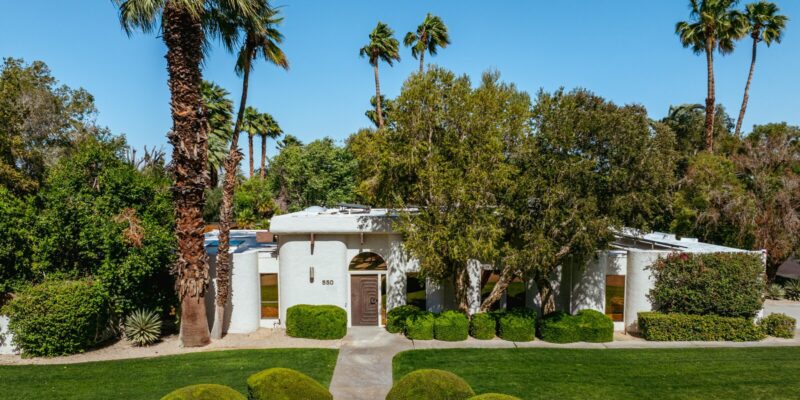If you’re house-hunting in California, these three markets tell three very different stories. San José is Silicon Valley’s heavyweight — high prices, frantic competition, and new-construction cranes. Oakland is the Bay Area’s gritty, charming middle ground, where neighborhoods swing wildly from ultra-hot to bargain-prone by the block. Meanwhile, Palm Springs is a desert market built on mid-century architecture, second-home demand, and seasonal rhythms.
This guide provides straight-to-the-point market statistics, neighborhood insights, practical buyer tactics, and lesser-known local details that matter when you’re making an offer.
San Jose: The Price of Proximity to Tech
Current Market Snapshot
San Jose is expensive by any standard outside Silicon Valley. Recent statistics reveal the following:
- Median Sale Price: $1,400,000
- Year-on-Year Growth: Down 0.67%
- Average Days on Market: 22 days
What These Numbers Mean for Buyers
The high price point reflects strong demand from tech professionals. Homes are often designed with tech buyers in mind—open floor plans, dedicated workspace areas, and modern amenities. However, new developments frequently come with high HOA fees that can impact your monthly budget.
Interestingly, important price variations exist within San Jose, like:
- West San Jose commands premium prices with high-end single-family lots and luxury builds.
- Central San Jose offers relatively more affordable options.
- Willow Glen and Japantown surprise buyers with walkable main streets and strong community character that feel distinct from the typical tech metropolis.
Lesser-Known Insider Tips
- Transit-Oriented Development: San Jose is channeling new construction through transit-adjacent projects, particularly around Diridon Station and North San Jose. This trend softens bargaining power in certain price bands but creates condos with superior commute advantages compared to isolated single-family homes.
- Commute Reality Check: If you work in tech, focus on actual commute time to your specific office location, not just map distance. Traffic on Highway 880 and US-101 can add significant time that fundamentally changes your lifestyle quality. Test your commute during rush hour before making an offer.
Ready to move to San Jose? Explore 1,300+ homes for sale in San Jose on Houzeo, America’s best home buying and selling website. View detailed photos, save your favorite homes, and share the homes you love with the people you love.
Oakland: The City of Micro-Markets
Current Market Snapshot
Oakland’s market dynamics vary dramatically by neighborhood:
- Median Sale Price: $700,000
- Year-on-Year Growth: down 15.2%
- Average Days on Market: 36 days
Understanding Oakland’s Price Variations
The year-over-year price decline doesn’t tell the full story—Oakland is far from uniform. Market performance depends heavily on specific neighborhoods:
- Premium Neighborhoods (Holding Value Strong):
- Rockridge, Montclair, and Piedmont Avenue: Command premium prices for tree-lined streets, top-rated public schools, and excellent BART or shuttle access.
- Jack London Square: Waterfront condos remain desirable for short commutes to San Francisco via ferry and Bay bridges.
- Opportunity Zones (More Price Variability):
- Downtown and West Oakland: Display greater price fluctuation and can offer opportunistic purchases for buyers willing to tackle renovations.
- Temescal and Fruitvale: Cultural vibrancy and small business density create lively streets but also price volatility.
Critical Oakland Buying Strategy
In Oakland, micro-factors matter more than macro headlines. A single crime report, school boundary adjustment, or transit announcement can quickly shift a neighborhood’s desirability. This makes neighborhood-level comparables far more important than city-wide averages.
Ready to explore Oakland? Browse 1,200+ homes for sale in Oakland and take advantage of a rising inventory and negotiation opportunities.
Palm Springs: Desert Living and Seasonal Demand
Current Market Snapshot
Palm Springs operates on a completely different rhythm. It’s housing market snapshot looks like:
- Median Sale Price: $630,000
- Year-on-Year Growth: up 2.0%
- Average Days on Market: 112 days
Market Segmentation and Buyer Types
Palm Springs has become increasingly segmented by property type:
- Fast-Moving Properties:
- Condos and one-bedroom “lock-and-leave” units attract investors and seasonal residents.
- Lower maintenance requirements appeal to part-time residents.
- Slower-Moving Properties:
- Larger single-family homes with pools see longer marketing windows.
- These properties offer deeper negotiation opportunities for patient buyers.
Desert Climate Considerations
Many Palm Springs buyers are out-of-area second-home purchasers, which creates specific inspection priorities. Budget carefully for desert-specific maintenance, which include:
- Pool equipment condition and maintenance costs
- Irrigation systems (desert-adapted landscaping)
- Air conditioning condition and efficiency
- Sun damage to exteriors and roofing
Mid-Century Modern Premium
Mid-century architecture drives a distinct buyer profile in Palm Springs. Homes in authentic mid-century neighborhoods command premium prices for preserved original details. However, these buyers also demand quality restoration work.
Buyer Beware: “Chic” listing photos may not reveal deferred maintenance issues common in older desert homes. The appeal of mid-century design can mask expensive mechanical and structural problems. Always conduct thorough inspections, particularly of HVAC systems, plumbing, and electrical work.
Looking for homes for sale in Palm Springs that give you the perfect blend of city amenities with the spacious living of the suburbs? Find them on the go on your mobile device with the best home buyer app in America. Download the Houzeo mobile app from the Apple App Store or the Google Play Store for free.
Neighborhood Specifics
- San José: look beyond “San José” as a single market. Willow Glen feels like a small town inside a big city—tree-lined, bungalow-heavy, and with strong local retail—but West San José and Almaden Valley are where larger lots and newer custom builds sit. The Diridon area has been gaining traction due to transit and mixed-use development. So, if you value transit access and future appreciation tied to regional rail, it’s worth paying attention to this area.
- Oakland: Rockridge and Montclair hold value for school access and a quieter, suburban feel within the city. Temescal and Fruitvale are where culture and small business density make for lively streets, but also for price volatility. Jack London Square is a niche: walkable waterfront living and conversions of older buildings mean a mix of modern lofts and older stock—that variety creates negotiation opportunities, especially for buyers willing to accept modest cosmetic fixes.
- Palm Springs: The Old Las Palmas, Movie Colony, and Twin Palms neighborhoods are the spiritual heart of mid-century architecture; buyers seeking authentic designs pay a premium, and restorations can be costly. In contrast, the Cathedral City and Rancho Mirage outskirts may offer lower entry prices but different lifestyle tradeoffs (longer drives to downtown restaurants or seasonal events). Pools, irrigation, and AC conditions matter more here than in Bay Area climates.
Financing and Long-Term Resale Considerations
If you plan long-term residency, prioritize location and build quality over short-term price fluctuations.
San Jose: Tech Employment Correlation
San Jose values correlate strongly with tech employment corridors. If your job is stable within Bay Area tech, San Jose retains long-term appreciation potential despite high entry prices.
Here you can get resale advantage as properties near transit hubs and in well-established neighborhoods consistently outperform during market downturns.
Oakland: Location Arbitrage
Oakland represents “location arbitrage”—certain neighborhoods still beat San Francisco significantly on price per commute minute. However, resale success depends heavily on choosing the right micro-market.
It’s important to note that properties in neighborhoods with improving schools, declining crime, and new business development appreciate faster than city averages.
Palm Springs: Lifestyle Investment
Palm Springs works well as a lifetime-use vacation property or rental investment, but you must factor in occupancy seasonality if you intend to rent. The market attracts specific buyer profiles (retirees, second-home owners, mid-century enthusiasts), which can affect resale timelines. What’s more is that authentic mid-century homes in premium neighborhoods here hold value best, particularly those with documented restoration work.
Which Market Fits You?
California’s real estate landscape is a patchwork of unique opportunities, each with its own set of rules. Whether you’re captivated by San Jose’s tech-driven boom, Oakland’s vibrant, eclectic neighborhoods, or Palm Springs’ laid-back desert lifestyle, the key is aligning your priorities with what each area offers.
- Buy in San José if career proximity to tech matters and your budget absorbs competition and higher taxes. Use patience and a local agent who understands the Diridon and North San José micro-markets.
- Buy in Oakland if you want Bay Area access with neighborhood variety — but anchor your decision to block-level comps and not city averages.
- Buy in Palm Springs if lifestyle and architecture matter more than daily commute — it’s ideal for part-time residents, retirees, or buyers who prize outdoor living and design. Watch maintenance costs for desert living.
The real trick? Understanding what makes each place unique and choosing the one that fits you best. After all, your ideal market is one that mirrors your vision and lifestyle.








Comments